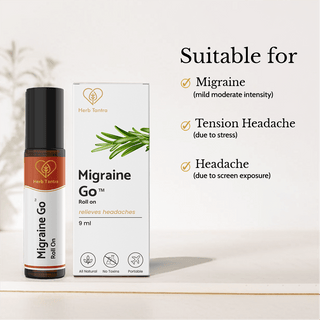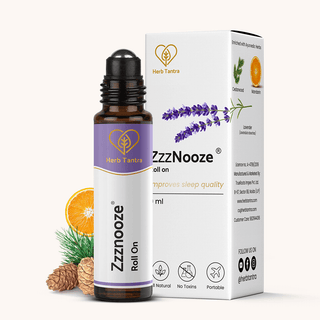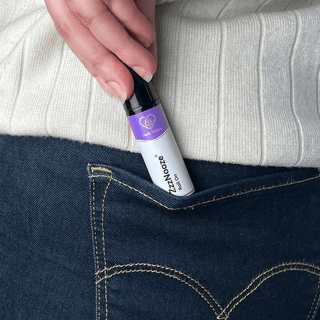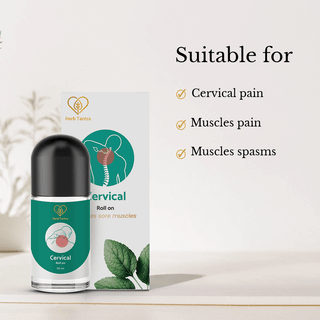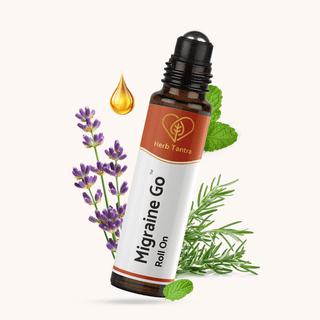In today’s fast-paced world, constant notifications, tight deadlines, and multitasking leave our minds scattered and exhausted. Over time, this continuous mental strain raises stress hormones like cortisol, leading to anxiety, fatigue, and poor sleep. Mindfulness meditation offers a natural, powerful way to reverse that cycle—by training your brain to stay calm, aware, and balanced, even amid chaos.
Let’s explore how mindfulness works on a biological level, how it lowers cortisol, and how you can make it part of your daily stress relief routine with the help of Herb Tantra’s Stress Relief Range.
Understanding Cortisol – The Stress Hormone
Cortisol is your body’s built-in alarm system. In short bursts, it helps you stay alert and focused. But when you’re under chronic stress, cortisol levels stay high, keeping your body in a constant state of alertness.
This leads to symptoms such as -
- Anxiety and mood swings
- Fatigue and brain fog
- Weight gain and hormonal imbalance
- Sleep disturbances
- Weakened immunity
Mindfulness helps regulate this response by teaching your brain to pause, observe, and respond thoughtfully—rather than react impulsively.
How Mindfulness Meditation Reduces Cortisol
When you meditate mindfully, you slow your breathing, lower your heart rate, and activate the parasympathetic nervous system—the body’s “rest and restore” mode.
Over time, studies show that mindfulness meditation can -
- Lower cortisol production
- Reduce anxiety and depression symptoms
- Improve focus and decision-making
- Increase serotonin and dopamine (the “happiness” hormones)
- Strengthen emotional regulation and resilience
By shifting your brain’s chemistry toward calm, mindfulness becomes a long-term stress management tool—not just a temporary fix.
Tip - Before you begin your practice, apply Herb Tantra’s Calm Down Roll On on your wrists and behind your ears. Inhale deeply—the blend of Lemon, Patchouli, and Geranium instantly grounds you and enhances focus during meditation.
How to Practice Mindfulness Meditation at Home
You don’t need a fancy setup—just 5–10 minutes of quiet space can make a difference.
Step 1 - Sit comfortably with your back straight and eyes closed.
Step 2 - Focus on your breath as it flows in and out.
Step 3 - When thoughts arise (and they will), simply observe them—don’t judge or chase them.
Step 4 - Bring your attention back to your breath each time it drifts.
This simple practice rewires your brain for calm and presence.
Enhance your routine - Sip on Calm Down Herbal Tea, made with Butterfly Pea, Lemongrass, Mulethi, and Chamomile. These herbs support mental relaxation, reduce fatigue, and help your body transition into a state of deep calm.
The Science of Mindfulness and the Brain
Mindfulness meditation doesn’t just feel relaxing—it physically changes your brain. Neuroimaging studies have shown that regular meditation -
- Shrinks the amygdala, the brain’s fear center.
- Strengthens the prefrontal cortex, responsible for rational thinking.
- Increases gray matter density in regions that regulate emotion and memory.
In simpler terms, mindfulness helps your brain shift from survival mode to balance mode, reducing overthinking and improving emotional control.
Integrating Mindfulness Into Daily Life
You don’t have to sit in silence for hours to experience the benefits. Mindfulness is about being fully present in whatever you do—eating, walking, working, or even parenting.
Try these simple ways to practice mindfulness daily -
- Morning - Begin your day with a few deep breaths and gratitude journaling.
- Midday - Take a mindful break—close your eyes, inhale deeply, and roll on Calm Down Roll On to refresh your senses.
- Evening - Sip Calm Down Herbal Tea while reflecting on your day, without screens or distractions.
- Night - Meditate for 5 minutes before sleep to calm your mind and lower cortisol levels.
For children who experience restlessness or hyperactivity, use Calm Down Junior Roll On (with Cedarwood, Patchouli, and Geranium). Apply it gently on their wrists or chest to promote peaceful sleep and relaxation before bed.
The Mind-Body Connection in Stress Relief
Mindfulness bridges the gap between body and mind—it teaches you to notice how thoughts affect physical sensations and vice versa. Over time, this awareness improves:
- Emotional balance
- Digestive health
- Sleep quality
- Focus and creativity
Combined with Ayurvedic remedies and self-care rituals, mindfulness becomes a sustainable, natural way to manage stress, anxiety, and fatigue in your everyday life.
Building a Mindful Evening Ritual
End your day with a simple calming ritual to help your mind unwind:
- Dim the lights and switch off devices.
- Roll on Calm Down Roll On and take 10 slow, deep breaths.
- Sip a warm cup of Calm Down Herbal Tea to release tension.
- Sit in quiet reflection or guided meditation for 10 minutes.
This nightly practice trains your nervous system to slow down, improve sleep quality, and restore balance after a long day.
FAQs
1. How does mindfulness reduce anxiety and stress?
It lowers cortisol levels, relaxes the nervous system, and helps you respond calmly to stressful triggers.
2. How long does it take for mindfulness to show results?
Regular practice for even 10 minutes a day can improve mood and focus within a few weeks.
3. Can mindfulness help with sleep issues?
Yes. It reduces racing thoughts and activates the body’s relaxation response, improving sleep quality naturally.
4. Are there natural ways to enhance mindfulness?
Yes. Using aromatherapy like Calm Down Roll On or herbal blends like Calm Down Herbal Tea enhances focus and relaxation during meditation.
5. Can kids learn mindfulness?
Absolutely. Mindful breathing and Calm Down Junior Roll On can help children calm down and sleep better.





